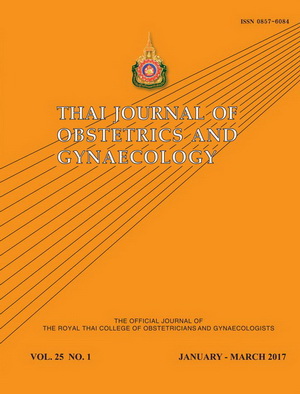Microcephaly: Significance and how to approach during the zika era
Main Article Content
Abstract
Microcephaly is an uncommon but important ultrasonographic finding. The smallest-head infants trend to suffer the severest level of developmental delay. Currently, more than three SDs below the mean is accepted as the definition for microcephaly diagnosis. Wrong gestational age determination, craniosynostosis and intrauterine growth restriction (IUGR) are firstly differentiated. Then, associated abnormalities and pathognomonic clues for diagnosing the etiologic cause of microcephaly should be ultrasonographically surveyed. Teratogenic exposure, intrauterine infection (TORCH and zika) and genetic abnormalities are possible etiologies. Prognosis and management depend on gestational age, severity of head size, associated anomalies and possible cause.
Article Details
How to Cite
(1)
Hanprasertpong, T. Microcephaly: Significance and how to approach during the zika era. Thai J Obstet Gynaecol 2017, 25, 2-5.
Section
Special Article


